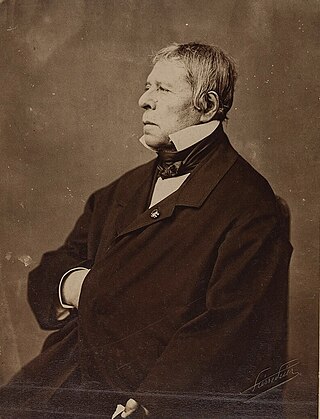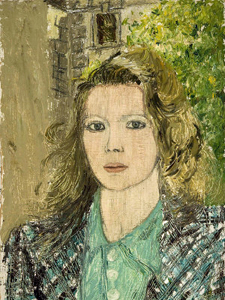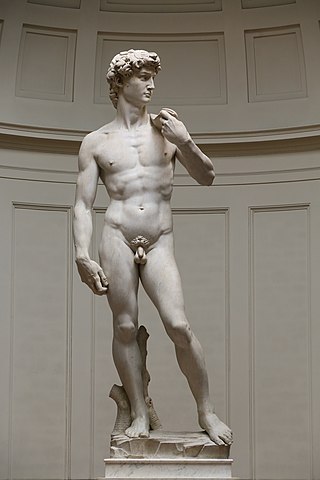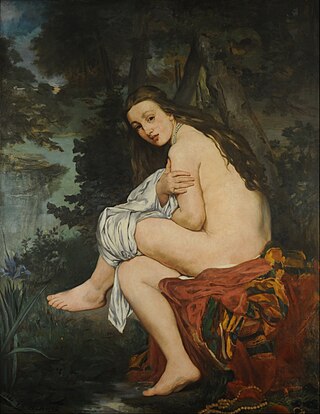
Jean-Auguste-Dominique Ingres was a French Neoclassical painter. Ingres was profoundly influenced by past artistic traditions and aspired to become the guardian of academic orthodoxy against the ascendant Romantic style. Although he considered himself a painter of history in the tradition of Nicolas Poussin and Jacques-Louis David, it is his portraits, both painted and drawn, that are recognized as his greatest legacy. His expressive distortions of form and space made him an important precursor of modern art, influencing Picasso, Matisse and other modernists.

Suzanne Valadon was a French painter who was born Marie-Clémentine Valadon at Bessines-sur-Gartempe, Haute-Vienne, France. In 1894, Valadon became the first woman painter admitted to the Société Nationale des Beaux-Arts. She was also the mother of painter Maurice Utrillo.

Le Déjeuner sur l'herbe – originally titled Le Bain – is a large oil on canvas painting by Édouard Manet created in 1862 and 1863.

Olympia is a 1863 oil painting by Édouard Manet, depicting a nude white woman ("Olympia") lying on a bed being attended to by a black maid. The French government acquired the painting in 1890 after a public subscription organized by Claude Monet. The painting is now in the Musée d'Orsay, Paris.

The Rokeby Venus is a painting by Diego Velázquez, the leading artist of the Spanish Golden Age. Completed between 1647 and 1651, and probably painted during the artist's visit to Italy, the work depicts the goddess Venus in a sensual pose, lying on a bed with her back facing the viewer, and looking into a mirror held by the Roman god of physical love, her son Cupid. The painting is in the National Gallery, London.

Mickalene Thomas is a contemporary African-American visual artist best known as a painter of complex works using rhinestones, acrylic, and enamel. Thomas's collage work is inspired from popular art histories and movements, including Impressionism, Cubism, Dada, the Harlem Renaissance, and selected works by the Afro-British painter Chris Ofili. Her work draws from Western art history, pop art, and visual culture to examine ideas around femininity, beauty, race, sexuality, and gender.

Sylvia Sleigh was a Welsh-born naturalised American realist painter who lived and worked in New York City. She is known for her role in the feminist art movement and especially for reversing traditional gender roles in her paintings of nude men, often using conventional female poses from historical paintings by male artists like Diego Vélazquez, Titian, and Jean-Auguste-Dominique Ingres. Her most well-known subjects were art critics, feminist artists, and her husband, Lawrence Alloway.

Feminist art is a category of art associated with the feminist movement of the late 1960s and 1970s. Feminist art highlights the societal and political differences women experience in their lives. The goal of this art form is to bring a positive and understanding change to the world, leading to equality or liberation. Media used range from traditional art forms, such as painting, to more unorthodox methods such as performance art, conceptual art, body art, craftivism, video, film, and fiber art. Feminist art has served as an innovative driving force toward expanding the definition of art by incorporating new media and a new perspective.

Odalisque With Raised Arms is a painting by Henri Matisse, completed in 1923. The oil on canvas measuring 23 by 26 inches is held in the National Gallery of Art, in Washington D.C.. Matisse's style changed and evolved drastically throughout his career, including his wide and varying collection of paintings depicting female nudes. His odalisque paintings were inspired by his trip to Morocco. Many of the female subjects in the Odalisque paintings were modeled after Matisse's main model at the time, Henriette Darricarrère.
Émilie Charmy was an artist in France's early avant-garde. She worked closely with Fauve artists like Henri Matisse, and was active in exhibiting her artworks in Paris, particularly with Berthe Weill.

The nude, as a form of visual art that focuses on the unclothed human figure, is an enduring tradition in Western art. It was a preoccupation of Ancient Greek art, and after a semi-dormant period in the Middle Ages returned to a central position with the Renaissance. Unclothed figures often also play a part in other types of art, such as history painting, including allegorical and religious art, portraiture, or the decorative arts. From prehistory to the earliest civilizations, nude female figures were generally understood to be symbols of fertility or well-being.

Grande Odalisque, also known as Une Odalisque or La Grande Odalisque, is an oil painting of 1814 by Jean-Auguste-Dominique Ingres depicting an odalisque, or concubine. Ingres' contemporaries considered the work to signify Ingres' break from Neoclassicism, indicating a shift toward exotic Romanticism.
The Blue Room may refer to:

La Nymphe surprise, or Surprised Nymph, is a painting by the French impressionist painter Édouard Manet, created in 1861. The model was Suzanne Leenhoff, a pianist whom he married two years later. The painting is a key work in Manet's production, marking the beginning of a new period in his artistic career and generally in the history of modernism in French painting. It is in National Museum of Fine Arts in Buenos Aires and it is considered one of the collection's highlights. La Nymphe surprise remained in the artist's possession his entire life, and there is evidence that, apart from the emotional significance it represented for the artist, Manet considered this painting as one of his most important works.

Joy of Life is an oil painting by Suzanne Valadon, completed in 1911. It was bequeathed to the Metropolitan Museum of Art, in New York, in 1967.
Prostitution in Impressionist painting was a common subject in the art of the period. Prostitution was a very widespread phenomenon in nineteenth-century Paris and although an accepted practice among the nineteenth century bourgeoisie, it was nevertheless a topic that remained largely taboo in polite society. As a result, Impressionist works depicting the prostitute often became the subject of scandal, and particularly venomous criticism. Some works showed her with considerable sympathy, while others attempted to impart an agency to her; likewise some work showed high-class courtesans, and others prostitutes awaiting clients on the streets. In addition to the sexual revulsion/attraction the figure of the prostitute stirred, she functioned as a sign of modernity, a clear sign of the entanglement of sex, class, power and money.

Laure was an art model in France known for her work with artist Édouard Manet. She is best known for posing as the black maid offering the white nude figure a bouquet of flowers in Manet's 1863 painting Olympia.

Casting the Net is an oil-on-canvas painting by French artist Suzanne Valadon, executed in 1914. It has the dimensions of 201 by 301 cm. It is held in the collection of the Museum of Fine Arts in Nancy.

The Abandoned Doll is an oil-on-canvas painting executed in 1921 by French artist Suzanne Valadon. It has the dimensions of 135 by 95 cm. It is held at the National Museum of Women in the Arts, in Washington, D.C.

Adam and Eve is an oil-on-canvas painting by French artist Suzanne Valadon, executed in 1909. Its dimensions are 162 by 131 cm. It is held at the Musée National d'Art Moderne, in Paris.


















